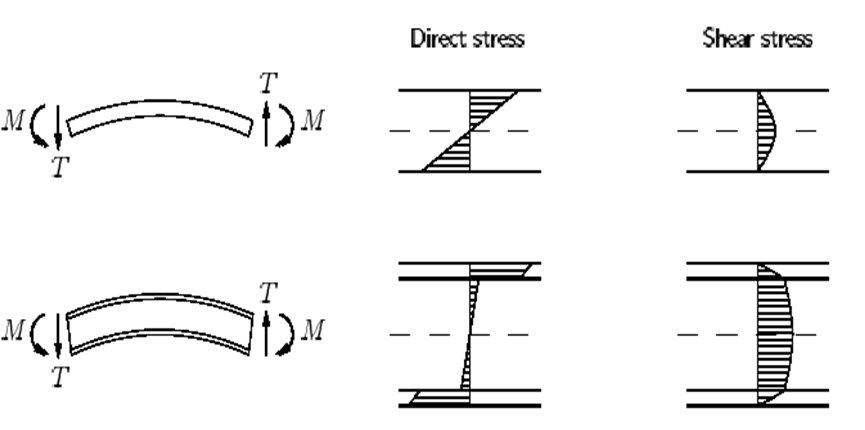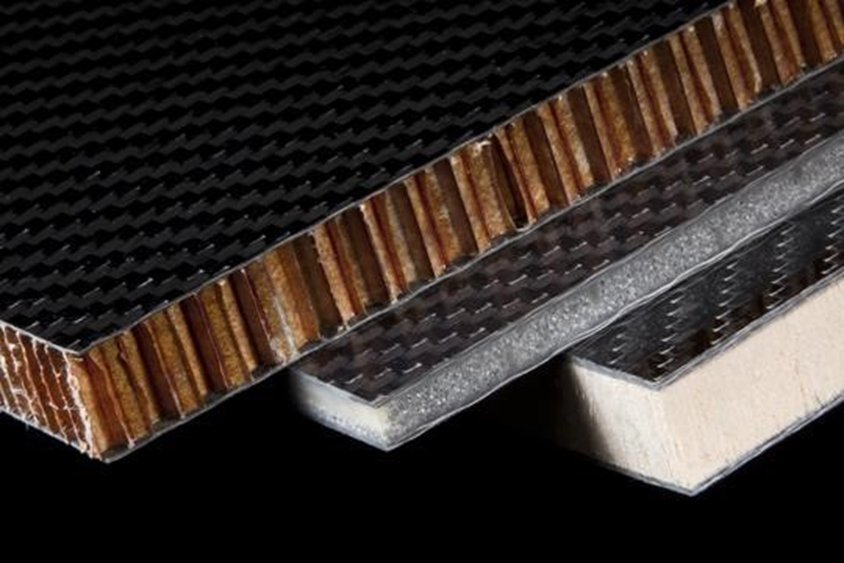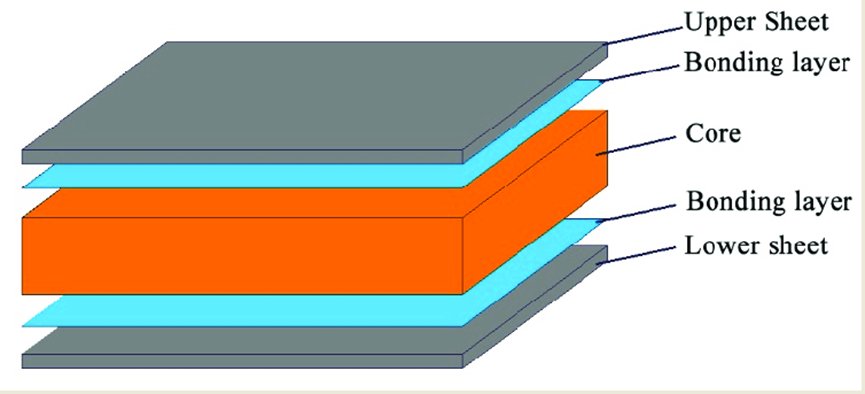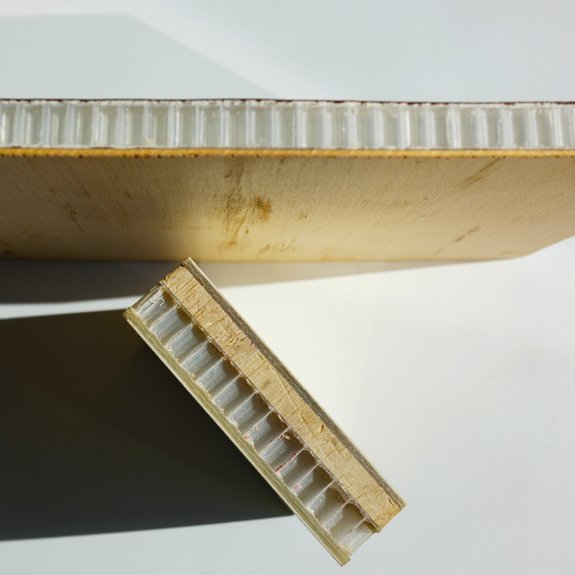In the fields of aviation, wind turbine blades, sports equipment, shipbuilding, trains and locomotives, sandwich structures are widely used to reduce weight. In a sandwich structure, low-density sandwich materials are used to increase the thickness of the laminate to achieve the purpose of improving material stiffness.
In this way, the stiffness of the structure is greatly improved with a small increase in weight.
Under bending load, the surface material mainly bears tensile stress and compressive stress, and the core material mainly bears shear stress. At the same time, for very thin thin-walled sandwich structures, it is also necessary to pay attention to the impact of the load application method on the sandwich structure and the sandwich structure. Ability to withstand impact loads.

Stress distributions in single skin panel and sandwich panel.
The main reasons for the development of sandwich structures
The purpose of using a sandwich structure is to improve the effective utilization of materials and reduce the weight of the structure. Taking beam-slab components as an example, during use, one must meet the strength requirements and the other must meet the stiffness requirements. FRP materials are characterized by high strength and low modulus. Therefore, when a single fiberglass material is used to make beams and plates, the deflection is often very large when the strength requirements are met. If the design is based on the allowable deflection, the strength will be greatly exceeded, resulting in waste. Only by designing in the form of a sandwich structure can this contradiction be reasonably resolved. This is also the main reason for the development of sandwich structures.
Sandwich structure classification

There are many types of skin and core materials for sandwich structures. If aluminium or titanium alloy is used as the skin and core material, it is called a metal sandwich structure; FRP sheets, wooden plywood and inorganic composite material boards are used as the skin, and FRP honeycomb is used. , paper honeycomb and foam plastic are used as sandwich materials, it is called a non-metallic material sandwich structure. At present, the sandwich structure with FRP sheets as skin and FRP honeycomb and foam plastic as core materials is the most widely used.
Characteristics of sandwich structure

1) Has a large bending stiffness/weight ratio and bending strength/weight ratio
2) Has good sound absorption, sound insulation and heat insulation properties
3) Has a large critical buckling load
4) Sensitive to hot and humid environments, moisture-proof sealing is required during design.
5) The panel is sensitive to low-energy impact
6) Difficulty in repairing
Characteristics of plastic Honeycomb sandwich panel

The honeycomb is made of polypropylene, a durable and 100% recyclable material. The honeycomb structure composed of 95% vacuum uses little material while ensuring high mechanical properties. Honeycomb sandwich panels have various characteristics including high stiffness, high strength, low density and other beneficial mechanical properties. The lightness of sandwich panels allows you to gain an advantage in transport and main building costs. Also, their maintenance costs are low thanks to their durable structure. In brief, the sandwich panel is both a fast and aesthetic solution and is budget-friendly for its longevity.

